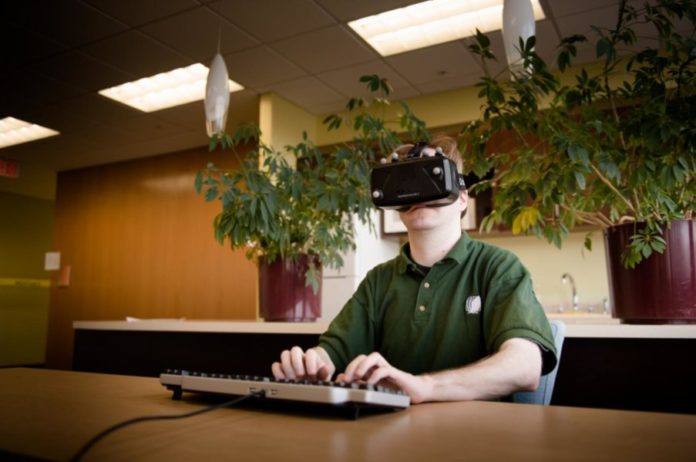As virtual reality introducing the new virtual world, it becomes more realistic and immersive. Similarly, typing a text has a surprising lack of emphasis on virtual reality (VR) development.
James Walker, a lecturer in computer science, at Michigan Tech said, “The fact that people need to see what they’re typing. But, it is a bit difficult with an over-eye headset on.”
Having concern over it, Walker has developed a light-up virtual keyboard corresponding with a physical keyboard. This enables users to see in the head-mounted display what keys they are typing on the physical keyboard.
Scott Kuhl, an associate professor said, “There are lots of people buying VR headsets, but for gaming purpose. We’re trying to figure out how we can use a head-mounted display for office work like writing and editing a document or sending a message to someone.”
Generally, VR systems rely on mid-air virtual keyboards or overlaying of real-world video into the VR display. But both options require additional mechanism so that it can be error-prone and intrusive.
Walker said, “Typing in midair is very fatiguing. Our solution is noteworthy because it enables people to continue using their physical peripherals, which gives the best performance, and it doesn’t need any extra hardware or require superimposing a video feed into the virtual environment.”
To test its efficiency, Walker conducted an experiment in which participants typed on a keyboard they couldn’t see. In a first part, participants wore an Oculus Rift head-mounted display. Later, they used a desktop monitor with their view of the keyboard occluded by a cover.
At the start, participants reported their typing ability to be expert or at least proficient. They even make lots of mistakes especially those without the virtual keyboard lighting up keys.
Keith Vertanen, an assistant professor of computer science said, “People underappreciate the redundancy in natural language. Our recognition touch screen program, VelociTap, is extremely accurate as it’s been trained on billions of words.”
“We were pleasantly surprised by how well the autocorrect algorithm shifted from its touch screen origins to predicting intended letters on a physical keyboard. In addition, we observed that error rates declined as people continued typing with the VelociTap feedback and the model corrected about two-thirds of the text errors.”
